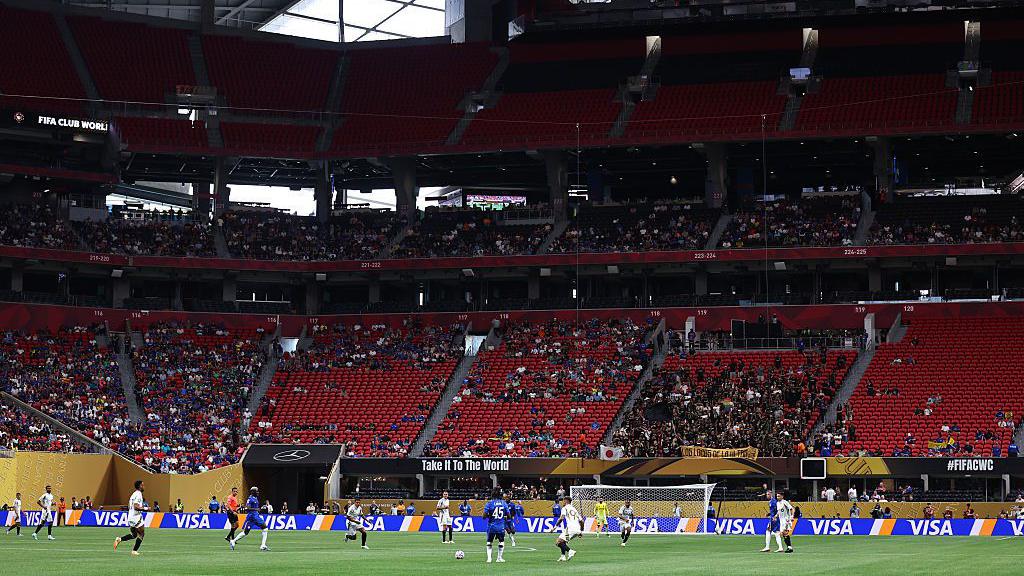ATLANTA — Chelsea’s much-anticipated debut in the Fifa Club World Cup was played out in front of nearly 50,000 empty seats at Atlanta’s Mercedes-Benz Stadium, highlighting growing concerns over scheduling, pricing, and the tournament’s lack of appeal to American audiences.

Despite Chelsea’s 2-0 win over Los Angeles FC, the sight of a mostly vacant stadium dominated conversation around the newly expanded tournament. Official attendance was listed at 22,137 in a venue that can accommodate 71,000, though the upper tier was closed entirely and vast swaths of the lower bowl sat half-empty.
The match kicked off at 3 p.m. on a Monday, a decision that baffled observers given the weekday work schedule and time zone constraints.
“The environment was a bit strange,” said Chelsea manager Enzo Maresca post-match. “The stadium was almost empty… but we are professionals and have to adapt.”
Ticket pricing and tournament marketing have been widely criticized. Though seats dropped to £26 during the match, prices were significantly higher earlier in the lead-up, with the cheapest pre-kickoff tickets hovering around £37. Despite this, tickets were still available in almost every section.
LAFC, a late addition to the tournament after Leon was disqualified, brought just 150 fans—but they dominated the atmosphere. Chelsea supporters were vocal for goals and player debuts, but overall engagement was subdued.
The matchup was also geographically awkward: Los Angeles is over 2,000 miles from Atlanta, and local interest seemed lacking despite the city being home to Atlanta United, one of Major League Soccer’s best-supported clubs with an average home attendance of 44,037.
In stark contrast, Chelsea previously drew more than 70,000 fans to the same stadium in 2022 for a preseason friendly against Newcastle, suggesting that the Club World Cup’s format and execution—not the teams—may be to blame.
The tournament, hosted exclusively in the United States, is being viewed as a test run for the 2026 World Cup, set to be held across the U.S., Canada, and Mexico. But the early signs are troubling.
Doug Roberson of the Atlanta Journal-Constitution attributed the low turnout to timing and lack of public familiarity.

“The people aren’t here because it’s Monday at 3 p.m.,” he said. “It’s a tournament that doesn’t mean a lot to people in the U.S. because it’s new… and people are trying to save money for the actual World Cup next year.”
Jonathan Tannenwald, chief soccer correspondent for the Philadelphia Inquirer, blamed Fifa’s marketing missteps.
“There was no local organizing committee,” Tannenwald said. “They expected people to just show up. That’s on Fifa.”
According to BBC Sport’s Phil McNulty, the sight of tens of thousands of empty red seats marked a “grim confirmation” of long-standing fears that the Club World Cup might struggle for relevance in an already oversaturated football calendar.
“It’s an early embarrassment for Fifa,” McNulty wrote, “and perhaps a warning about realistic ticket pricing and match scheduling ahead of 2026.”
While Chelsea-LAFC flopped in the stands, other matches have done better. More than 55,000 watched Boca Juniors vs. Benfica in Miami later the same day. The tournament opener between Inter Miami and Al Ahly reportedly drew 60,927 fans, while PSG’s 4-0 demolition of Atletico Madrid in California attracted 80,619.
Still, tickets remain available for every remaining match. While Real Madrid’s opener is nearly sold out through official channels, resale markets suggest thousands remain unsold.
Fifa implemented a “dynamic pricing” model, where ticket prices fluctuate based on demand. Reports indicated some students were even offered four free tickets with a single £14.70 purchase as part of late promotional efforts.
LAFC coach Steve Cherundolo noted the contrast between cities: “Maybe LA likes football more than Atlanta.”



